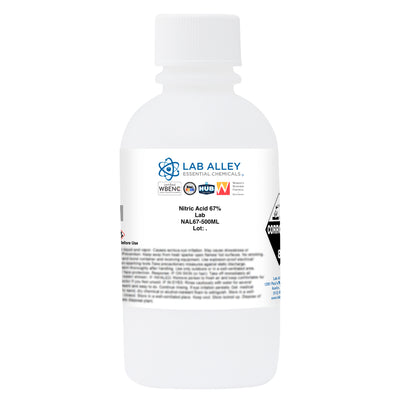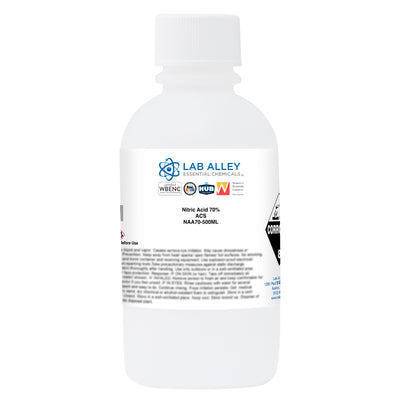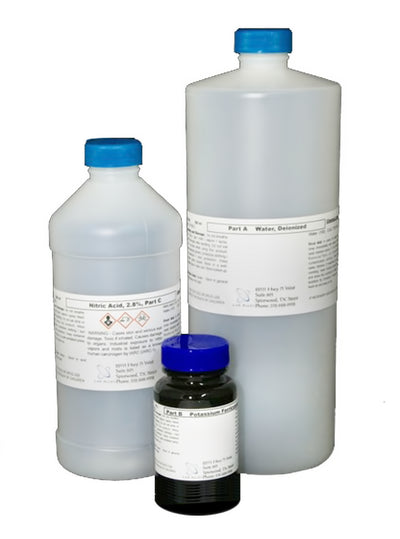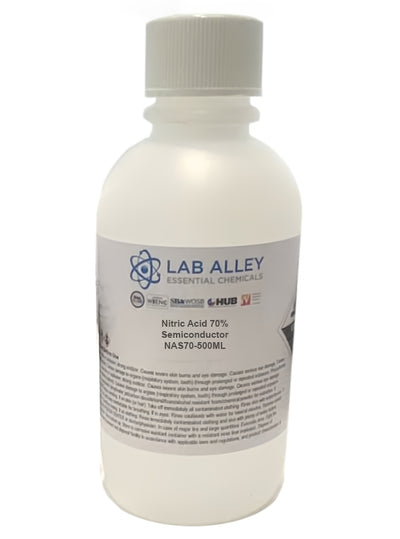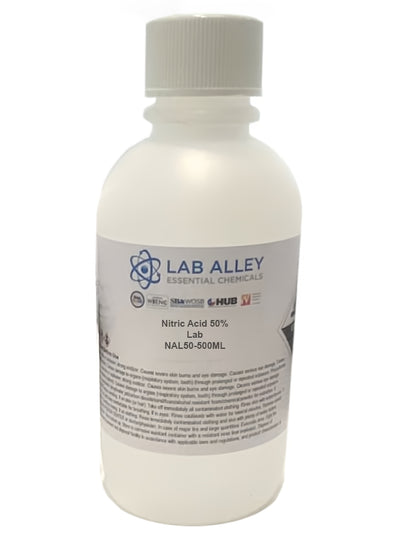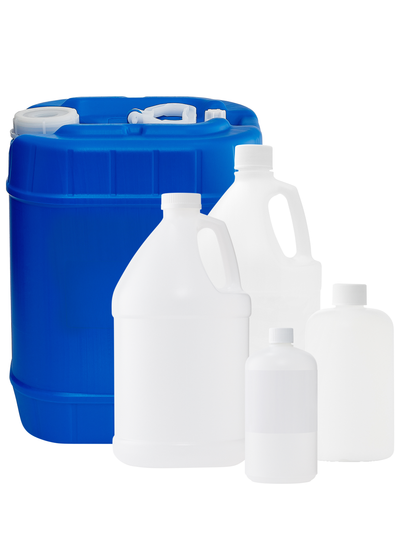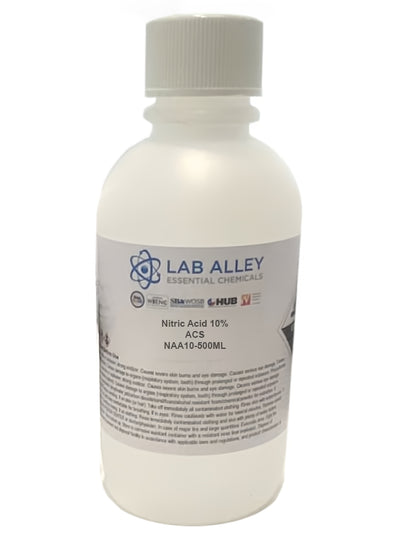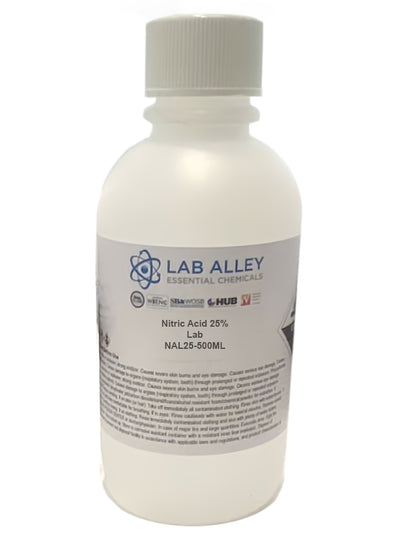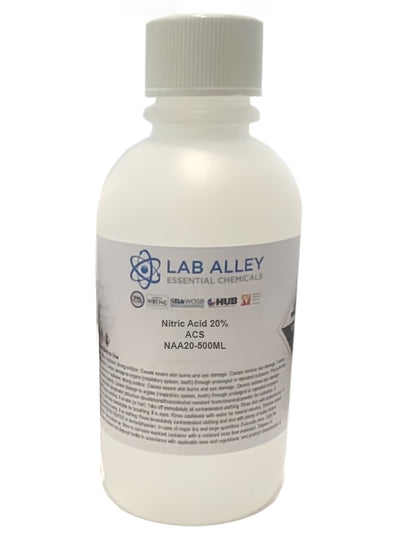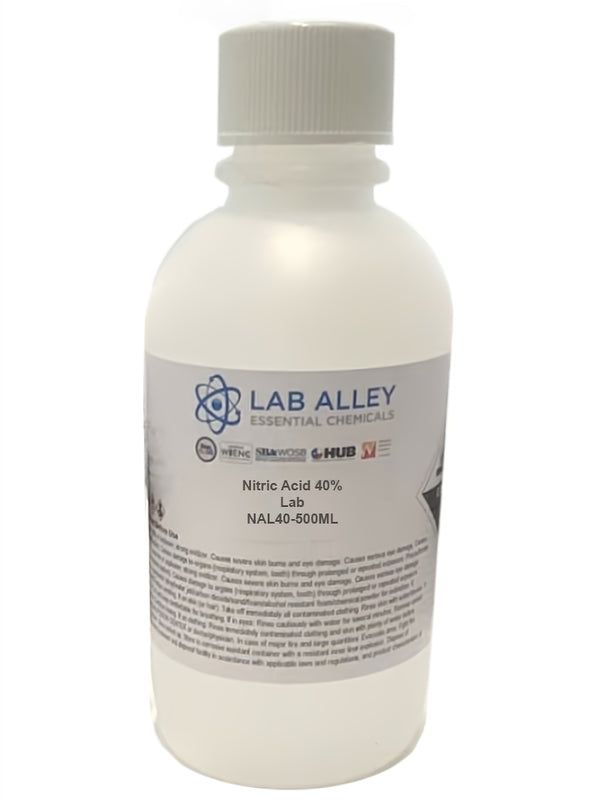
Business Support
Nitric Acid 40% Solution, Lab Grade
Business Support
Description
About Nitric Acid 40% Solution, Lab Grade
Nitric Acid (HNO3) is a corrosive mineral acid commonly known as aqua fortis (Latin for "strong water") and the spirit of niter. The pure chemical is colorless at room temperature but breaks down into nitrogen oxides and water leading to a yellowish tinge of older samples. Our Nitric Acid, Lab Grade contains 40% pure Nitric Acid in its solution with water and is reasonably pure in terms of heavy metal impurities.
Nitric acid is a versatile chemical and is used in various laboratory processes, including:
Acid Digestion: It is used to digest samples for elemental analysis by techniques such as inductively coupled plasma (ICP) or atomic absorption spectroscopy.
Metal etching: Nitric acid is used for etching metals in laboratory settings.
Nitrations: It is involved in various chemical reactions, such as nitrations, where organic compounds are reacted with nitric acid to introduce nitro functional groups.
Cleaning: Nitric acid can be used to clean laboratory glassware and equipment.
COMMON USES AND APPLICATIONS
- Oxidizing agent
- Reducing agent
- Anti-rust agent
INDUSTRIES
- Fertilizers manufacturing
- Beverage industries
PRODUCT INFORMATION
Customer Reviews and Q&A
Safety and Shipping
DOT: Nitric acid, 8, UN2031, PG II, Hazmat Fee Required
Business Support
Built for Business.
At Lab Alley, we simplify procurement with custom quotes, credit applications, tax exemptions, and fulfillment support, ensuring on-budget, on-time delivery - your success is our priority.
Apply for Credit
A Lab Alley credit account streamlines purchasing for your business. Our Customer Success Team is available to help you through every step of the process.
Request a Custom Quote
Get a fast, customized quote tailored to your specific needs. Our team ensures accurate pricing and availability to help streamline your purchasing process.

Additional Business Resources
Lab Alley provides access to essential certifications, documents, and other resources to support your business.

Create a Lab Alley Account

RECEIVE exclusive offers, promotions, and discounts on chemicals.

Always have the product you need, when you need it with our AUTOSHIP program.






